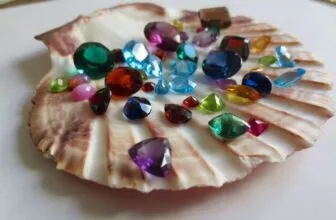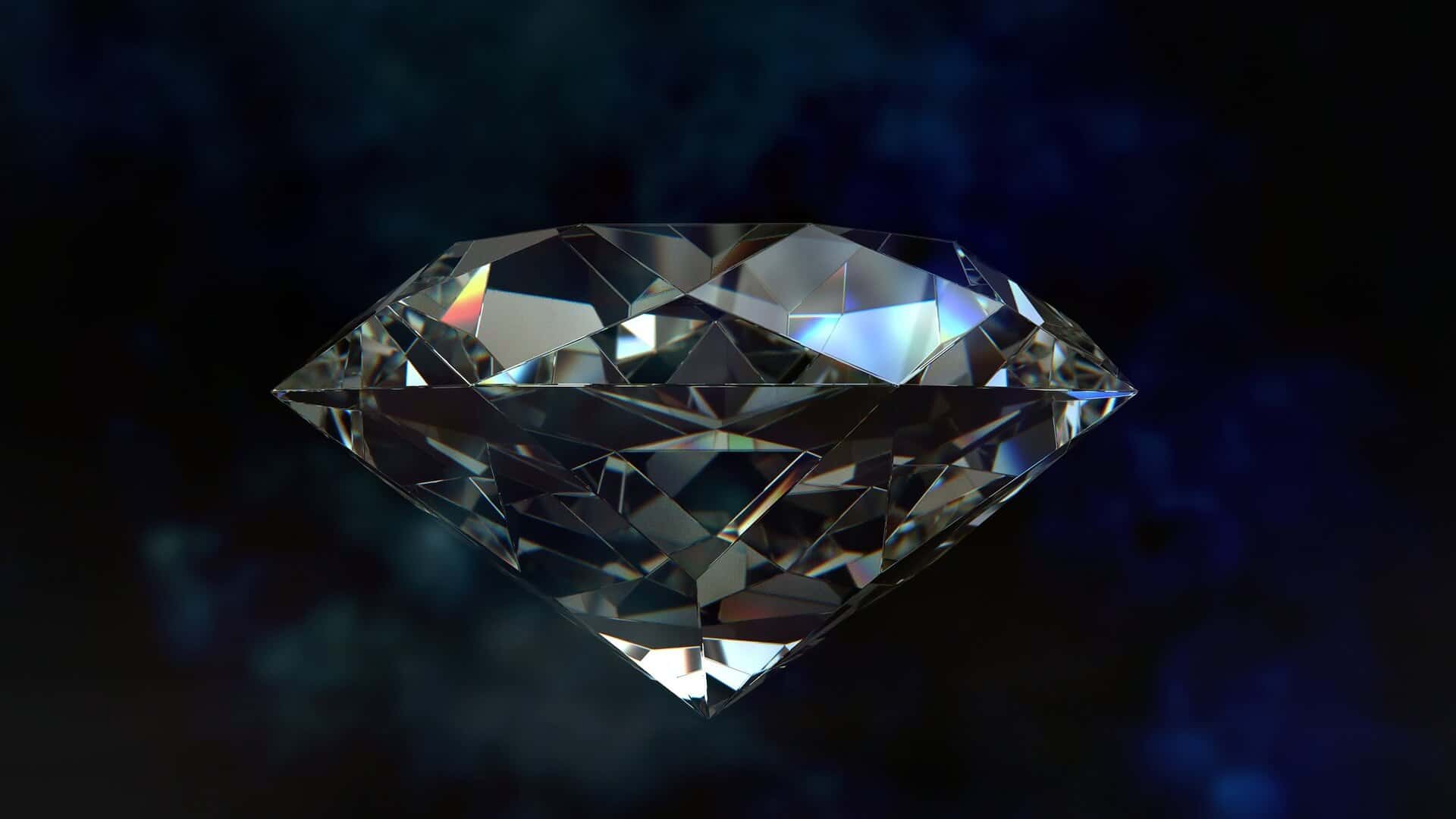
Table of Contents
The art of creating a diamond using technology and science is simply awe-inspiring.
Think about it.
It is as though the alchemists have finally discovered the secrets of creating gold out of lead. For a natural diamond to end up as a piece of jewelry, it takes millions of years, intense geological processes and expensive and environmentally-damaging mining procedures. But with lab-grown diamonds, all this becomes redundant.
It is no wonder that the market for synthetic (also called lab grown, cultured and man-made diamonds) is booming and is predicted to keep growing. However, there is a lot of misinformation regarding synthetic diamonds and a lot of it propagated by those with vested interests in the mined diamond market.
If you are considering a synthetic diamond, it’s important to know what they really are and why they can be, in fact, a better choice than a naturally mined diamond.
Is a synthetic diamond fake?
Before we go any further, I must stress that a synthetic diamond is not a fake diamond. There is a common misconception that synthetic stones are fake, however this couldn’t be further from the truth.
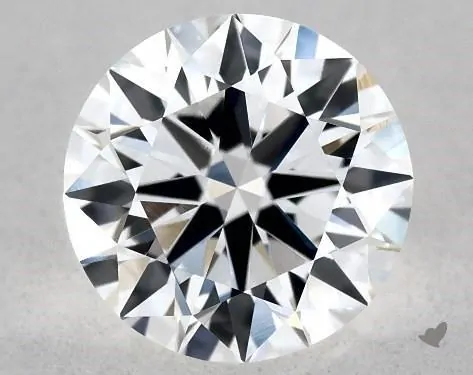
First of all, don’t confuse synthetic diamonds with diamond look-alikes. There are other gemstones on the market that are optically very similar to a diamond; in other words, they are just look-alikes. These include moissanite and cubic zirconia. These are gemstones in their own right but they are not on par with diamonds in terms of durability, brilliance and other aspects.
So what’s a synthetic diamond?
These are grown in labs copying the properties of the original. The labs use science and technology to produce in a few weeks what nature does in millions or even billions of years. This is an expensive and labor-intensive procedure but is still much more affordable than the procedures involved with natural diamond mining.
If you compared a synthetic diamond and a naturally mined one side by side, chances are that you would not be able to find any difference between the two. They are very similar in their chemical and crystal composition and are indistinguishable physically and optically. Only a gemologist with specialist equipment would be able to differentiate the two. Which brings us to the next question.
See more synthetic diamonds here.
How are lab created (synthetic) diamonds made?
Now that we’ve established that synthetic diamonds are, in fact, real diamonds, let’s take a look at how these are grown in labs.
In order to appreciate this process, we have to first know how nature forms diamonds. Diamonds form deep beneath the surface of the earth, about a 100 miles or so below.
The pressure and heat of this environment pressurizes and binds the carbon atoms together over millions of years to eventually form a diamond. For lab grown diamonds, there are two main techniques used. I’ve outlined these two processes very briefly below.
The HPHT Process – Natural conditions are imitated using a High Pressure High Temperature (HPHT) process. For this process, there are different forms of equipment available, such as the belt, cubic and split-sphere presses. However, each of these processes follow the same concept – creating an environment that has high pressure and high temperature where the diamond ‘seed’ along with carbon is placed to grow. This was the first technique that was used to create man made diamonds.
The CVD Process – The other technique used for the creation of synthetic diamonds is Chemical Vapor Deposition (CVD). This is a relatively newer method that uses a hydrocarbon gas mixture to form diamonds. It uses a sealed chamber which is heated to extreme temperatures. The seed diamond is placed here along with a gas rich in carbon. Various techniques are used to ionize the gas and break apart the bonds holding the molecules together, resulting in the pure carbon attaching to the diamond seed and slowly forming in layers.
Both the HPTP and CVD processes come with their advantages and disadvantages. While CVD does not require as much heat as HPTP and provides a greater control of the final product, HPTP allows for the formation of larger stones. There is ongoing research to fine-tune these processes that they may become more productive.
Varieties of lab-created diamonds
If you are diamond savvy, you will know that apart from the famed colorless stones that are so highly coveted for engagement rings, diamonds come in a variety of colors, which are broadly classified as Type 1 and 2 diamonds.
- Type 1 diamonds are defined by the intake of nitrogen and blue light during the formation phase. These include Brown, Yellow and Orange diamonds and are much more commonly found.
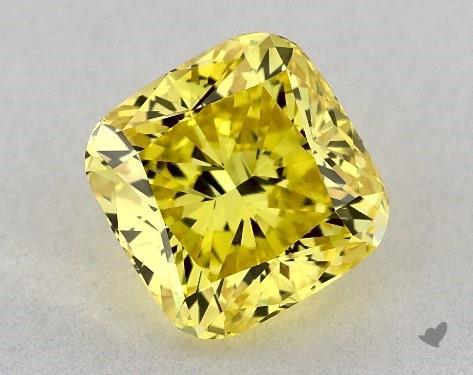
- Type II diamonds are determined by the lack of nitrogen during the diamonds creation. These diamonds are much rarer and more valuable than Type 1, including the highly coveted Blue, Red, Pink and Green.
Because colored diamonds are generally more expensive than colorless diamonds and are harder to find due to their scarcity (only a handful of naturally mined red diamonds are known to exist in the world!), lab-created colored diamond are a great option. In fact, many of the colored diamonds available on the market are synthetic stones.
In order to create the color of the diamond, certain foreign elements must be introduced during the formation of the stone.
- For blue diamonds, boron is introduced during the formation process. The higher the quantity of boron, the more intense the blue color. When creating a synthetic blue stone, the amount of boron is carefully controlled to gain the desired color.
- For yellow diamonds, nitrogen must be present in its chemical structure. If there is an excess of nitrogen, the color changes to brownish. Again, by carefully controlling the amount of nitrogen, the perfect color can be achieved.
- Green, pink, purple and red diamonds are commonly produced using a treatment called irradiation. This involves changing the crystal lattice of a colorless or yellow diamond by blasting the diamond with neutrons or electrons. With further heat treatment, these diamonds then create new colors.
Can I spot a synthetic diamond?
As I’ve mentioned before, it takes expertise to differentiate between a synthetic diamond and a mined diamond. It is impossible to distinguish this just by looking at the stone.
Why is this?
Because the main differences would be in the crystal structure of the diamond, caused by the differences in the environment in which the stone was produced. This cannot be identified by the naked eye.
Case in point, which of the following diamonds is natural and which is synthetic? It’s almost impossible to say by looking. Did you guess it right?

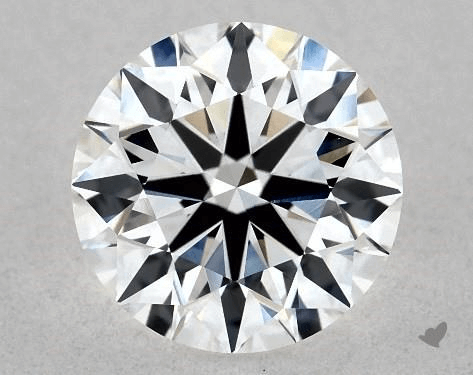
In many cases, a trained gemologist may be able to use standard equipment to identify the origin of the stone. However, because the quality of synthetic stones are increasing, it is getting increasingly difficult to distinguish between lab-grown and natural diamonds. In many cases, more advanced technology may be required.
One of the tell-tale signs is the type of inclusion that the diamond contains. Mined diamonds commonly have feathers, clouds and crystal inclusions, whereas lab created diamonds have metal inclusions. Metal inclusions are never found in mined diamonds. Under 10x magnification, these inclusions can be distinguished.
Why choose a synthetic diamond?
There are four main reasons that make a synthetic stone stand out from its natural counterparts. These reasons are monetary, environmental, ethical and availability.
1- An affordable option
Synthetic diamonds can be priced up to 15-50% lower than their natural counterparts. This makes it a much more affordable option, giving you more freedom in terms of budget without compromising on the quality. The reason synthetic diamonds can be priced so competitively is because it costs much less to create them than it does to acquire natural diamonds. Many shoppers erroneously believe that because a diamond has been grown in a lab, it must therefore be cheap. Remember that ‘cheap’ in the diamond world is relative.
Having said that, make sure you compare the prices and specifications of both mined and synthetic diamonds before you purchase. The 15-20% range is just a guideline and depends on where you buy. Sometimes, you can find a natural diamond cheaper than a synthetic one. Also bear in mind that synthetic diamonds may not have a big resale value.
2- An environmentally-friendly solution
Mining devastates the environment, leaving behind empty and unproductive land, destroying eco-systems and using up enormous amounts of resources. A standard open cut mine can be approximately 500 meters wide and 300 meters deep and leaves the area surrounding it barren and wasted.
On the other hand, synthetic diamonds use modest quantities of resources and have no negative environmental impact. They leave behind no mining footprint so are a great choice in terms of environmental sustainability.
3- Ethically sourced
Lab-grown diamonds are conflict-free and have no association with the exploitation of labor, the disruption of lifestyles or the funding of wars. There is no fear that the stone may be a blood diamond.
Even with the current steps and regulations in place to curb the market of conflict diamonds (diamonds that are used to fund wards and other conflicts), these can still find their way into the market. Synthetic diamonds are ethically sourced and gives you that peace of mind, knowing that the diamond you are wearing is not tainted by blood.
Some argue that the synthetic diamond market is taking away jobs and development desperately needed by the countries from where diamonds are mined. There is some truth in this statement and solutions need to be found for these issues.
4- Easily available
If you have your heart set on a colored diamond, you probably know that these are very expensive and often unavailable. A random search for blue and red diamonds on the James Allen website at the time of this writing came up with zero results.
However, synthetic colored diamonds are more readily available, and you will be able to find these in a range of sizes and features to suit your specifications.
Evaluating a synthetic diamond
Lab-grown diamonds are graded in the same way that mined ones are – by focusing on the 4Cs as well as other aspects of the stone.
Evaluating the carat weight of a synthetic diamond
Carat weight is the most critical factor when it comes to the price of a synthetic stone. Due to the limitations of existing technology, large stones are difficult to grow, and this impacts the price exponentially. You will find that two .50 carat diamonds will be priced cheaper than a single 1.0 carat diamond.
Evaluating the cut of a lab-grown diamond
Cut is important in bringing out the beauty of the stone. An expert cutter can reveal the sparkle and brilliance hidden beneath the rough.
For colored diamonds, the stone is cut to maximize the color and not the brilliance, as is the case with colorless. Check that the stone is well proportioned and does not contain flaws such as windowing or extinction.
Evaluating the clarity of a synthetic diamond
Clarity refers to whether or not the diamond contains visible flaws. Many people mistakenly believe that lab-grown diamonds are always flawless and do not contain any inclusions. This is not true, as both lab-grown and mined diamonds have inclusions.
While the inclusions in mined diamonds are a result of debris and conditions within the molten rock in which it grows, lab diamonds commonly have metallic inclusions. When choosing a synthetic diamond, check if the stone is eye clean and has no visible flaws.
Evaluating the color of a synthetic diamond
Evaluating color in synthetic diamonds is the same as with mined diamonds. The colorless grades are always more valuable and prized.
Choosing the color grade of your stone also depends on the metal that will go with it. If you have chosen a white metal, then a stone on the D-F color scale will complement it. For yellow or rose gold metals, you can go higher up on the color scale.
Controversy in the diamond industry
Even with all these advantages to bolster their reputation, synthetic diamonds are receiving little love from the diamond industry. In fact, they are seen as a threat and are not welcomed by companies that have monopolized the diamond industry, such as De Beers and Tiffany’s.
One main argument against lab grown diamonds is that natural diamonds have history, permanence and romance linked to them due to how intense and time-consuming their formation process is.
You could, however, counter that argument by observing the wonders of technology and science involved in creating a lab-diamond, which in many people’s opinion are just as awesome as the natural process.
Buying a synthetic diamond
Shopping online for a synthetic diamond will give you a lot of options, as there are many vendors that now market these beautiful stones. As we’ve mentioned, James Allen has a good range of lab-created diamonds and is currently one of the largest online diamond retailers to offer synthetic diamonds. There are also a number of shops that specialize just in synthetic diamonds, which might be a good place to start your search. Make sure you check reviews and ensure that the supplier you choose is reputable and recognized. The last thing you want is to purchase a synthetic stone at the premium price of a mined one.
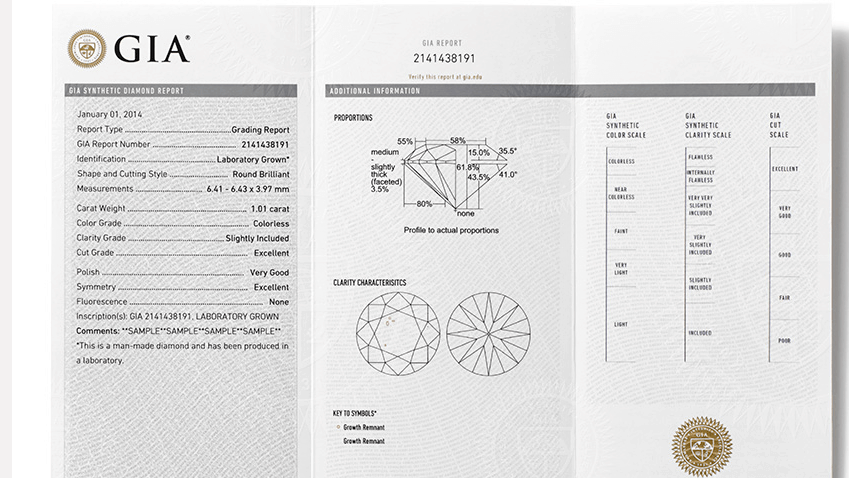
Regardless of who you buy from, ensure that you receive a grading certificate that evaluates the stone as well as states its origins. Currently, the Gemological Institute of America (GIA) is the only reputable lab that grades synthetic diamonds. Below is a sample report provided by the GIA.
At the end of the day, whether you choose a synthetic or mined diamond really comes down to your beliefs and preferances. What matters is what you believe is better for you and your lifestyle.
Looking to browse synthetic diamonds? Click here.


